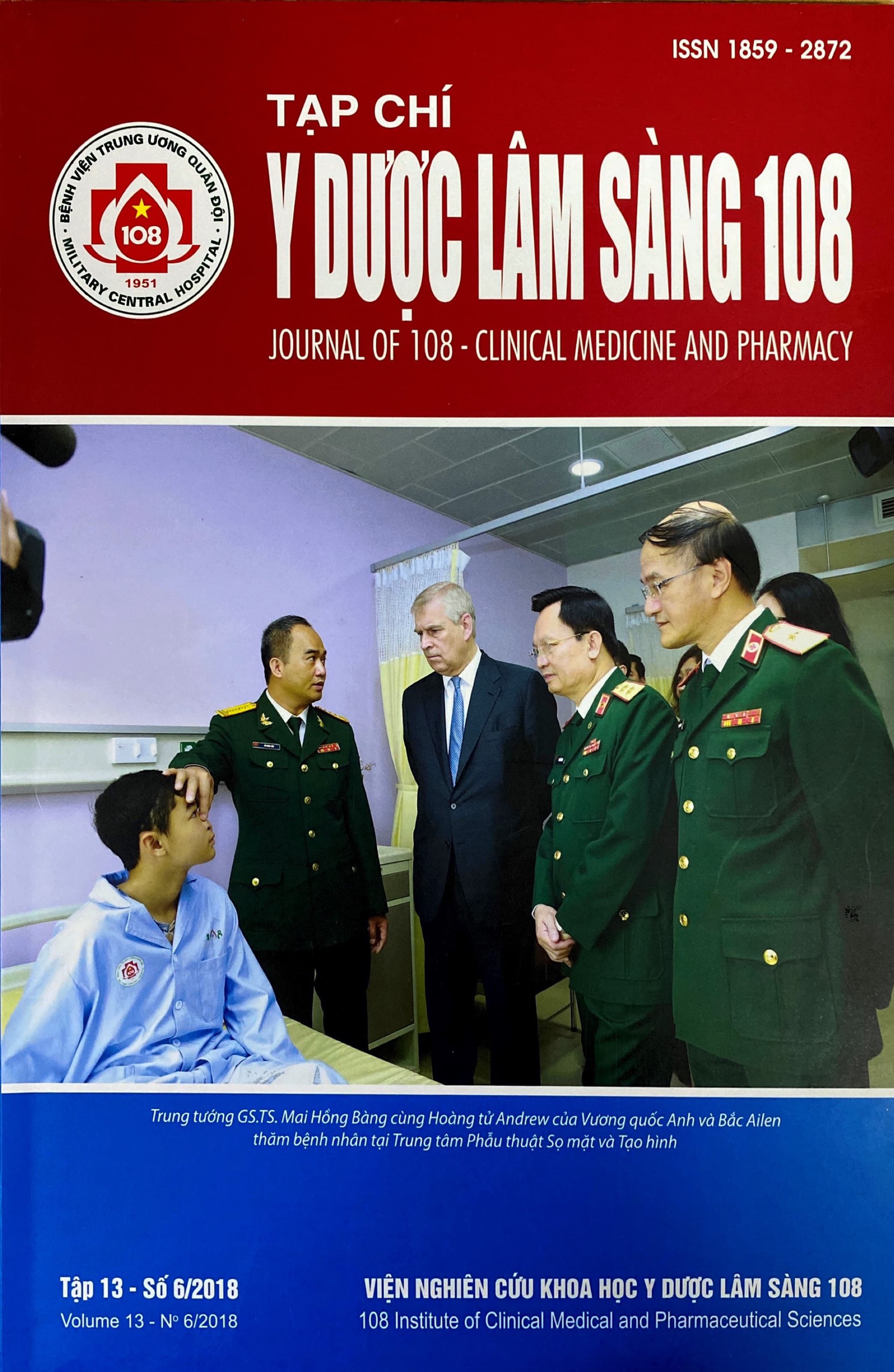Vai trò của dấu ấn DNA tự do của virus Epstein-Barr trong kiểm soát bệnh ung thư vòm mũi họng
Main Article Content
Keywords
Virus Epstein-Barr, ung thư vòm mũi họng
Tóm tắt
Ung thư vòm mũi họng là loại ung thư rất phổ biến ở một số nước châu Á, trong đó có Việt Nam. Ung thư vòm mũi họng liên quan mật thiết với nhiễm virus Epstein-Barr (EBV), hệ gen của virus này đã được xác định trong hầu hết các tế bào của khối ung thư vòm mũi họng. Nồng độ dấu ấn DNA tự do của virus Epstein-Barr trong huyết tương (cf EBV DNA) - định lượng bằng kỹ thuật real-time PCR với độ nhạy cao - là một dấu ấn sinh học tuyệt vời giúp kiểm soát bệnh ung thư vòm mũi họng. Bài tổng quan này đề cập đến vai trò của cf EBV DNA huyết tương trong phát hiện sớm, theo dõi sau điều trị và tiên lượng sau điều trị ung thư vòm mũi họng, mối quan hệ giữa tải lượng EBV DNA với giai đoạn bệnh và kích thước khối u.
Article Details
Các tài liệu tham khảo
1. Yu WM and Hussain SS (2009) Incidence of nasopharyngeal carcinoma in Chinese immigrants, compared with Chinese in China and South East Asia: Review. J Laryngol Otol 123(10): 1067-1074.
2. Vokes EE, Liebowitz DN, and Weichselbaum RR (1997) Nasopharyngeal carcinoma. Lancet 350(9084): 1087-1091.
3. Mutirangura A et al (1998) Epstein-Barr viral DNA in serum of patients with nasopharyngeal carcinoma. Clin Cancer Res 4(3): 665-669.
4. Ho HT et al (2017) Establishment of ultrasensitive PCR assay targeting cell-free EBV DNA for early detection of nasopharyngeal carcinoma. Vietnam Journal of Science, Technology and Engineering 59(3): 7.
5. Chan KC et al (2013) Early detection of nasopharyngeal carcinoma by plasma Epstein-Barr virus DNA analysis in a surveillance program. Cancer 119(10): 1838-1844.
6. Chan KCA et al (2017) Analysis of plasma Epstein-Barr virus DNA to screen for nasopharyngeal cancer. N Engl J Med 377(6): 513-522.
7. Lo YM et al (1999) Quantitative analysis of cell-free Epstein-Barr virus DNA in plasma of patients with nasopharyngeal carcinoma. Cancer Res 59(6): 1188-1191.
8. YM L et al (1999) Quantitative and temporal correlation between circulating cell-free Epstein-Barr virus DNA and tumor recurrence in nasopharyngeal carcinoma. Cancer Res 59(21): 5452-5455.
9. Wang WY et al (2011) Plasma Epstein-Barr virus DNA screening followed by (1) (8)F-fluoro-2-deoxy-D-glucose positron emission tomography in detecting posttreatment failures of nasopharyngeal carcinoma. Cancer 117(19): 4452-4459.
10. Chan AT et al (2002) Plasma Epstein-Barr virus DNA and residual disease after radiotherapy for undifferentiated nasopharyngeal carcinoma. J Natl Cancer Inst 94(21): 1614-1619.
2. Vokes EE, Liebowitz DN, and Weichselbaum RR (1997) Nasopharyngeal carcinoma. Lancet 350(9084): 1087-1091.
3. Mutirangura A et al (1998) Epstein-Barr viral DNA in serum of patients with nasopharyngeal carcinoma. Clin Cancer Res 4(3): 665-669.
4. Ho HT et al (2017) Establishment of ultrasensitive PCR assay targeting cell-free EBV DNA for early detection of nasopharyngeal carcinoma. Vietnam Journal of Science, Technology and Engineering 59(3): 7.
5. Chan KC et al (2013) Early detection of nasopharyngeal carcinoma by plasma Epstein-Barr virus DNA analysis in a surveillance program. Cancer 119(10): 1838-1844.
6. Chan KCA et al (2017) Analysis of plasma Epstein-Barr virus DNA to screen for nasopharyngeal cancer. N Engl J Med 377(6): 513-522.
7. Lo YM et al (1999) Quantitative analysis of cell-free Epstein-Barr virus DNA in plasma of patients with nasopharyngeal carcinoma. Cancer Res 59(6): 1188-1191.
8. YM L et al (1999) Quantitative and temporal correlation between circulating cell-free Epstein-Barr virus DNA and tumor recurrence in nasopharyngeal carcinoma. Cancer Res 59(21): 5452-5455.
9. Wang WY et al (2011) Plasma Epstein-Barr virus DNA screening followed by (1) (8)F-fluoro-2-deoxy-D-glucose positron emission tomography in detecting posttreatment failures of nasopharyngeal carcinoma. Cancer 117(19): 4452-4459.
10. Chan AT et al (2002) Plasma Epstein-Barr virus DNA and residual disease after radiotherapy for undifferentiated nasopharyngeal carcinoma. J Natl Cancer Inst 94(21): 1614-1619.
 ISSN: 1859 - 2872
ISSN: 1859 - 2872
